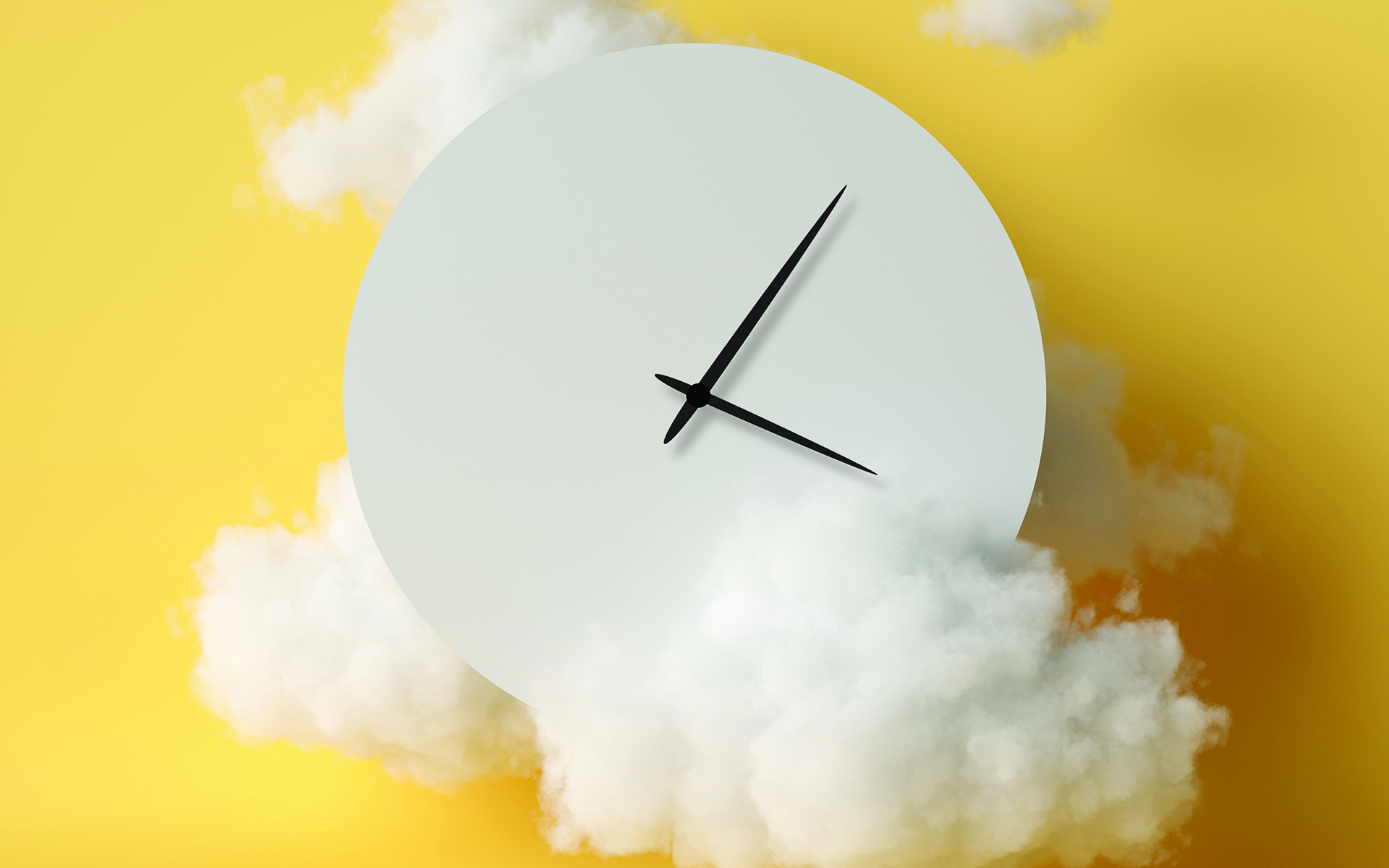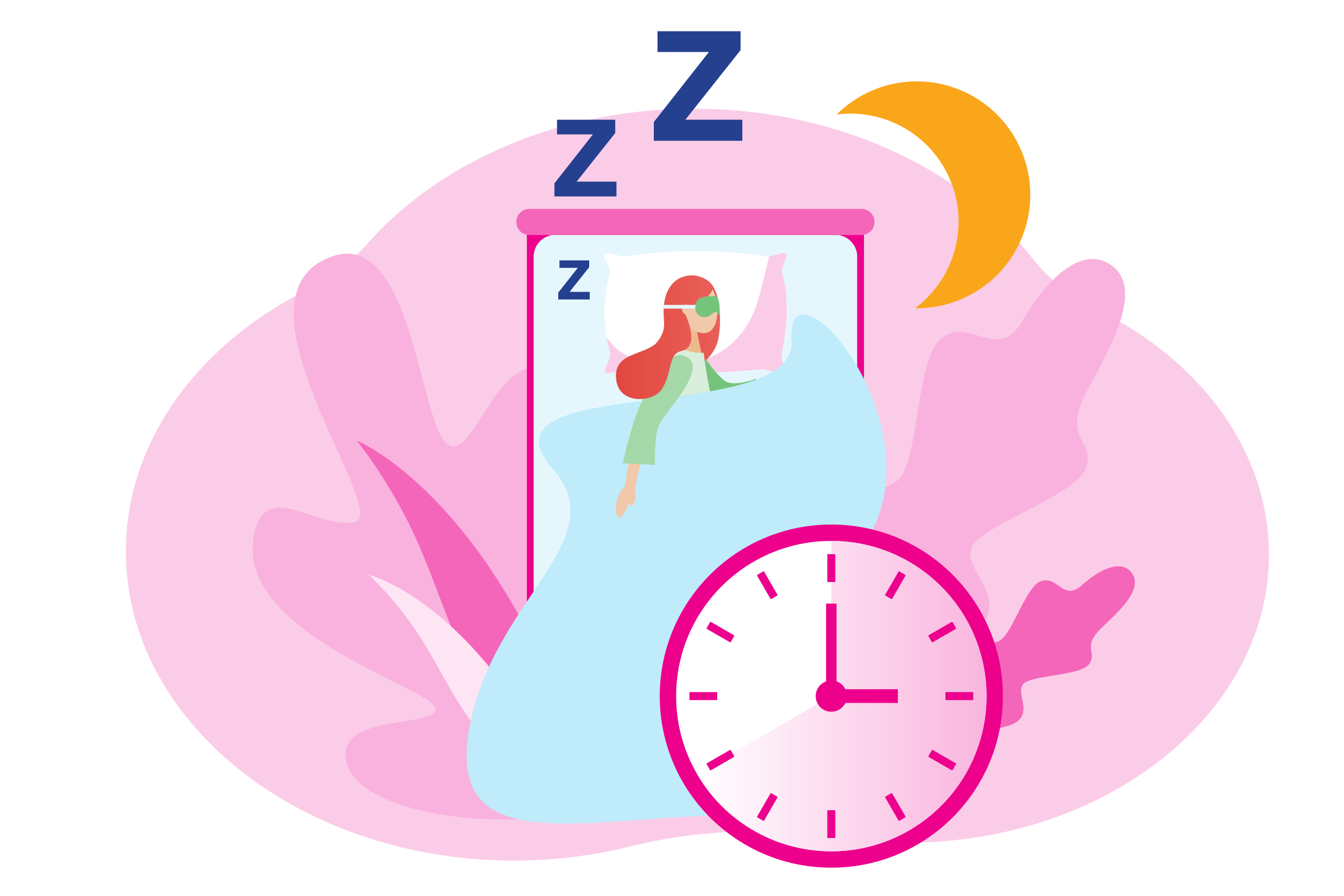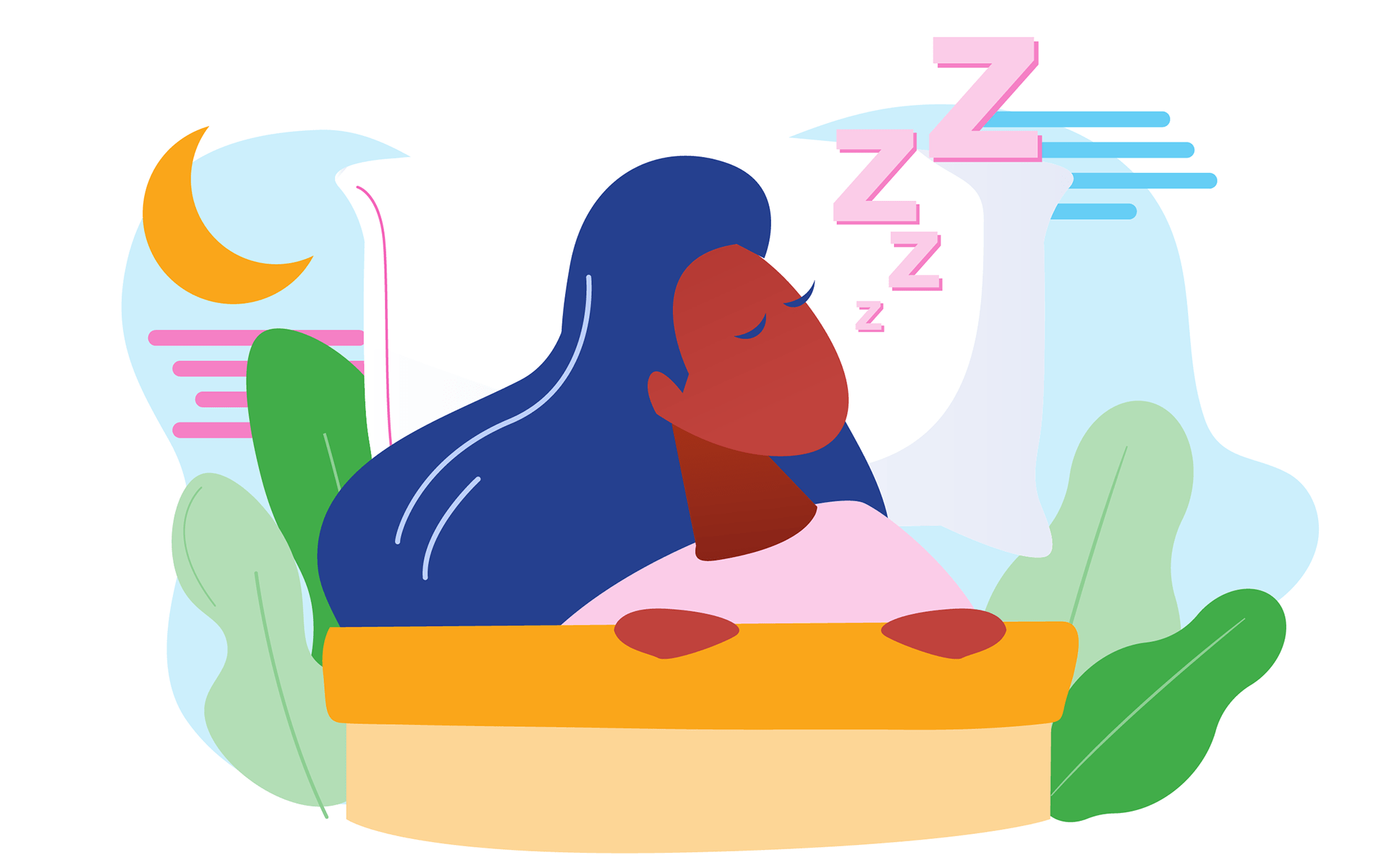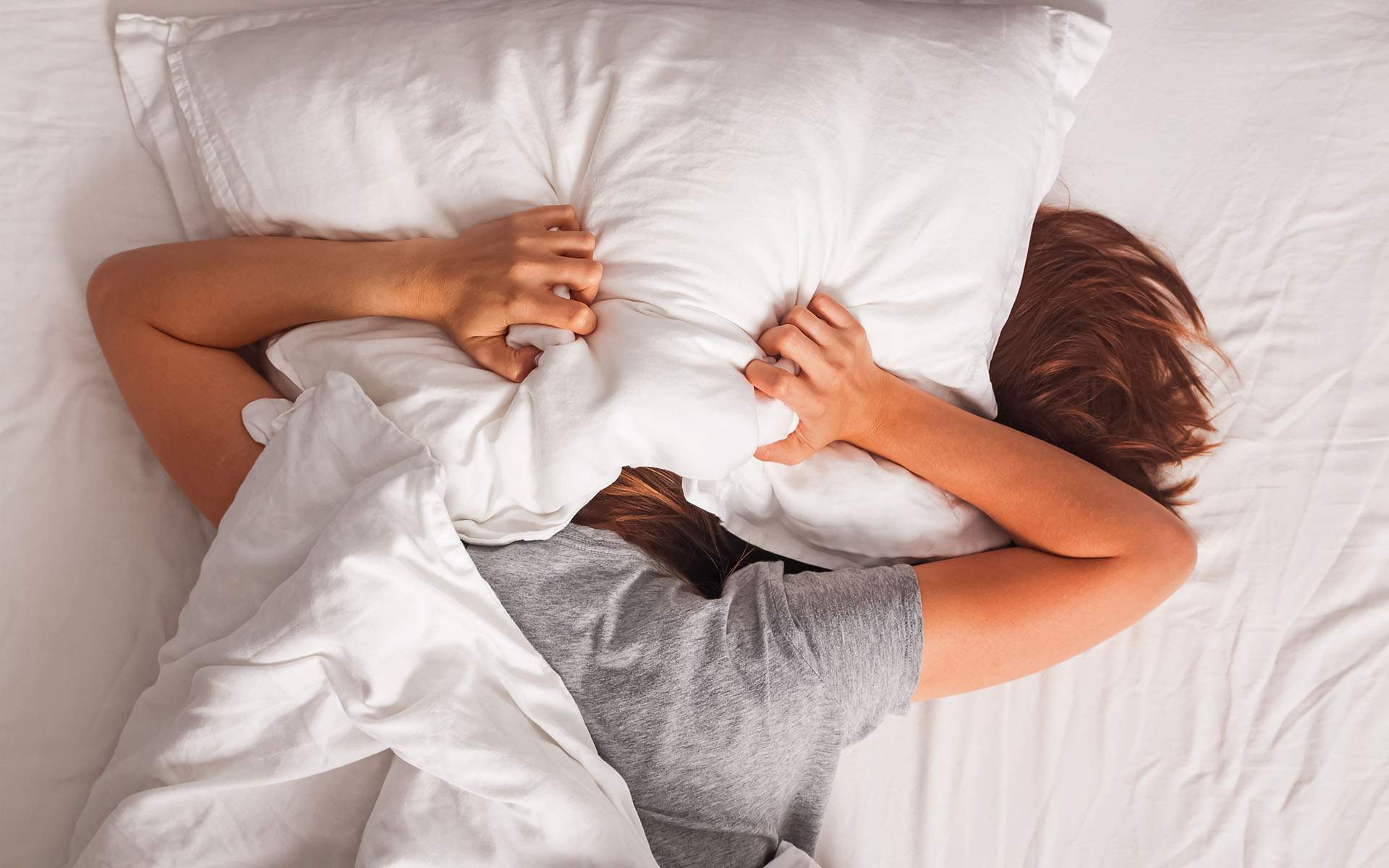There’s a master clock inside your head. Tucked deep inside your brain, this expert timekeeper keeps all of the cells in your body running smoothly, protects you from chronic disease, and helps you have deep, rejuvenating sleep. To keep these systems ticking along, this internal clock relies on a steady diet of healthy habits and mindful routines.
Unfortunately, steadiness and routine can be hard to come by, especially since overload and uncertainty seem to be the hallmarks of 2020. Many of us are navigating strained relationships due to lack of physical proximity (or political proximity), souped-up tech algorithms leading us down information rabbit holes, and a generalized din of dread caused by the pandemic.
In today’s culture of disruption, it’s even more important that we create daily habits that support our well-being so we can get rejuvenating sleep and allow our minds to remain receptive and open
In the best of times, stress can interrupt our sleep patterns and cause us to lose hold of the daily habits and rhythms that keep us healthy. In today’s culture of disruption, it’s even more important that we create daily habits that support our well-being so we can get rejuvenating sleep and allow our minds to remain receptive and open in order to meet the unique challenges of the COVID era.
What is Circadian Rhythm?
What most of us may not realize is how nearly all of our cells, tissues, and organs rely on internal daily rhythms, or circadian clocks, to keep our bodies running smoothly and in peak health under the watchful eye of the master clock. And those internal daily clocks rely on routines and timing in order to keep ticking for our optimal health.
The master clock is headquartered in the suprachiasmatic nuclei (SCN) in the brain’s hypothalamus. There are peripheral clocks located all over the body—in the heart, lungs, kidneys, pancreas—and they are synchronized with the master clock through both hormonal and neuronal signals. These clocks make up our circadian system, which controls the functioning of each bodily process, including sleep, metabolism, hormone release, alertness, blood pressure, heart function, cognitive function, and the immune and reproductive systems. Take a moment to read that list again. Together, the circadian rhythms synchronize most of our brain and body functions. “The master clock in the brain is the conductor of the orchestra. The other clocks are the ‘players’ fine-tuning local timing under the guidance of the SCN clock,” explained Dr. Steven Lockley, an associate professor of medicine at Harvard Medical School. In order for our bodies to be in peak health, timing, rhythm, and habit are key. “We need to do things at the right time; for example, eating in the day when our metabolic efficiency is optimal, and not at night when the brain is promoting sleep and fasting.”
As humans, we evolved to follow regular patterns of light-dark exposure—we need the sun’s blue-enriched light during the day for alertness and activity, and the dark to prime our sleep, recovery, and repair mode. “The key to healthy sleep and circadian rhythms is stable, regularly timed daily light and dark exposure,” said Lockley. “These daily time cues are needed to reset our circadian clocks each and every day, which will not only determine how well we sleep but our very cellular health.”
What connects our internal, circadian rhythms with the outside world is the light that enters through our eyes. The light—the strongest synchronizing agent—stimulates a neural pathway to the “master clock,” which signals other brain regions and the peripheral clocks in the body that control hormones, body temperature, and other physiological processes that help regulate when we feel sleepy or awake.
Healthy circadian rhythms rely on regularity and stability— for the timing of light, timing of exercise, and timing of meals.
“Light is free for most of us, and you don’t even have to go outside to get it,” said Dr. Phyllis Zee, professor of neurology and the director of the Center for Circadian and Sleep Medicine at Northwestern University. Dr. Zee was one of the authors of a recent study that showed office workers who had exposure to light through a window tended to have longer sleep duration, better sleep quality, greater physical activity, enhanced mood, and better quality of life compared to office workers with less light exposure.
Ultimately, healthy circadian rhythms rely on regularity and stability— for the timing of light, timing of exercise, and timing of meals. “This is so your body’s physiology can anticipate what you’re going to do, and be prepared rather than reactionary,” said Dr. Zee. If you exercise too close to bedtime, for example, it can delay the timing of your rhythms, making it more difficult to fall asleep. Similarly, your blood pressure rises before you wake up in the morning, so if you get up at 2:00 in the morning, you’re more likely to feel more unstable because your blood pressure didn’t anticipate your need to get up. “The circadian system is the top dog, and regulates all of these systems, including sleep,” she said.
How Circadian Rhythms Impact Our Health
In today’s world, disruptions in circadian rhythms are common, especially when we are overloaded and operating in “react” mode rather than mindfully making choices about our behavior. “We override our natural rhythms by staying up late, using electric light, and eating any time of night, more than we think,” said Dr. Lockley. If you live in New York, for example, and stay awake two hours later than normal, it’s as if you’ve traveled two time zones west. Add a third hour on the weekend, and when you wake up on Monday morning, you have what’s called “social jet lag,” because your body clock is set to California time even though you never went anywhere. “The more frequent the flip-flopping between light and dark, the more problems you will have with social jet lag and imperfect synchronization with the outside world,” said Lockley. “Stability is key.”
When frequent sleep disturbances, night-time screen use, or high caffeine intake throw our light exposure out of whack, the natural circadian rhythms of the body are reset—to either speed up or slow down the internal clock, which influences all the systems that it controls. Extreme circadian instability—as seen with shift workers, such as nurses, doctors, transportation and factory workers, and first responders—can cause a variety of chronic health problems, increasing the risk of cardiovascular disease, impaired immune function, high blood pressure, diabetes, obesity, depression, and some forms of cancer.
Extreme circadian instability—as seen with shift workers, such as nurses, doctors, transportation and factory workers, and first responders—can cause a variety of chronic health problems.
Most of the research on circadian disruption and health comes from looking at shift workers, who typically work out of phase with their internal clocks— which can be off by as many as 12 hours. It is the continuing misalignment of their behavior from the clock, such as sleeping and eating at the wrong time, that leads them to develop health problems. “Shift workers adapt a little to the night shift, but not fully, and then they adapt back to the day shift, but not fully, and this lack of stability affects cell processes, metabolism, hormone levels, and many other systems and causes of chronic disease,” said Dr. Lockley.
A few helpful suggestions include: minimizing the number of night shifts in a row, keeping the same sleep-wake schedule on your at-home days as on your work days, if possible; getting out into the sun once you wake up, which will cue your biological clock that it’s time to be alert; and staying away from alcohol as a sleep aid, which may appear to calm the brain to help fall asleep, but will disrupt your sleep later. Melatonin has also been shown to help night-shift workers sleep in the day, but should be taken under a doctor’s supervision.
In non-shift workers, a similar thing happens, but it is less severe, and being off by as little as two hours of sleep regularly over time can affect our physiology and mental state. “If you’re chronically sleep-deprived, it can affect your immune system, making you more vulnerable to infection, and less able to mount an antibody response,” said Dr. Zee. “Lack of sleep can also throw circadian rhythms out of sync, which can further exacerbate difficulties with attention, mood, and memory.”
Establishing a routine that recognizes the body’s natural response to light and dark can help keep your circadian rhythms in sync. This means going to bed at the same time every night, trying not to eat three hours before bedtime, making sure you get some sunlight exposure every day, trying not to reach for your phone if you wake up in the middle of the night, and establishing a nightly wind-down routine that helps settle your body and mind, while also tapering off the amount of light you’re exposed to.
You may not be able to make all of these changes to your daily lifestyle, but being mindful of your body’s internal clock and modifying schedules to support your body’s exposure to natural light and dark cycles can be beneficial to your overall health.
Where Mindfulness Meets Circadian Health
Maintaining optimal circadian health can present a major challenge in normal times. In the COVID era, for many of us, daily life necessitates more screen time than usual, often extending into the evening (sometimes illuminating the bedroom). Meals can easily slide into the late evening (not to mention late-night snacking). All of our routines have shifted. But
mindfulness can help bring added awareness to our daily behaviors, offering an anchor for healthy circadian routines that can support the natural rhythms of our body’s internal clock. Throughout your day, mindfulness can support your ability to take a pause—a flash of awareness about what will serve you best—so that you can respond, rather than react, to a given situation, trigger, or challenge. “The role of mindfulness is in helping you make a choice about how to look after yourself in the bigger picture,” said Zindel Segal, PhD, Distinguished Professor of Psychology in Mood Disorders at the University of Toronto. “You can make mindful choices about what time to exercise, how much caffeine to drink, and how many YouTube videos to watch before bed, by asking yourself whether these activities will support your sleep.”
For most people, daily life tends to take on certain rhythms—you may walk the dog and meditate in the morning, exercise before lunch, and read a book or journal before bed. Eventually, the choices you make and rhythms you create will define your days and nights. “The things you do repeatedly before going to bed, like reading a book or writing in a gratitude journal, have a Pavlovian connection to sleep, which can be helpful,” said Dr. Segal.
“You can make mindful choices about what time to exercise, how much caffeine to drink, and how many YouTube videos to watch before bed, by asking yourself whether these activities will support your sleep.”
Zindel Segal, PhD, Distinguished Professor of Psychology in Mood Disorders
It is worth bringing more awareness to how we treat our days (Am I getting enough natural light?) and meal schedules (Can I eat dinner before it turns dark?) and routines (Can I meditate or do yoga before bed?). And each of these choices, supported by our mindfulness practice, can help create steadying routines that can support our mental, physical, and emotional health, not to mention set us up for deep, healing sleep at night.
Winding Down Before Sleep
In times of uncertainty, stress increases, and rhythms and schedules go awry. So, too, can sleep. Practicing mindfulness—through mindful moments, meditation, body scans, and yoga—can be an effective way to create those essential daily habits and a nightly wind-down period to prep for a good night’s sleep, calm the mind, and bring awareness to the body.
The journey to better sleep includes cultivating awareness and open curiosity about how you prepare your body and mind for sleep. “You can’t be doing taxes or another stressful activity at 8:59 p.m. and expect to fall asleep at 9:00,” said Dr. Sat Bir Singh Khalsa, an assistant professor at Harvard Medical School. “Stress and emotional activation generate physiological and cognitive arousal, which makes falling asleep more difficult.”
An effective way to prepare the body for sleep is to do gentle yoga poses, or some mindful stretching and breathing exercises before bed. In a recently published study on the impact of yoga-based programs for workplace professionals, results showed improved sleep at both the end of the three-day program and two months afterward. “People who practice before bedtime may be able to fall asleep easier,” said Dr. Khalsa, one of the study’s researchers. “Stress reduction is a strong contributor to improved sleep, and the longer you practice yoga, the more your system starts to reduce its chronic stress levels over the long term.”
What to Do When Your Head Hits the Pillow
As you’re about to doze off, it’s easy for thoughts, emotions, worries, plans, projects, and regrets to take over, sending us into repetitive loops of anxiety and frustration. Practicing mindfulness, the nonjudgmental awareness of our present-moment experience, can help you notice your thoughts, emotions, and body sensations. Focusing your attention on what you’re feeling can help you step out of the habit loop that often turns worrying into more worrying. Judson Brewer, MD, PhD, a professor and researcher at the Mindfulness Center at Brown University, calls this awareness the “bigger, better offer.”
A racing mind is the top complaint his patients report when it comes to sleep. “Awareness helps us see how unrewarding anxiety is, and it feels better to be aware of worrying rather than worry itself,” says Dr. Brewer. “Once you have awareness, you can use curiosity to notice places of tension, which then relax as a result, and this helps you step out of the loop.” Dr. Brewer recommends mindfulness to help his patients shift their mental energy from feeding mental habit loops to noticing the physical sensations in the body. “My top two suggestions are body scan and then body scan, because it’s that good,” he says.
Simply listening to your body can help you regulate your sleep. “When doing a body scan, you may start to discern between sleepiness, a state characterized by drowsiness and difficulty maintaining alertness, and fatigue, a state characterized by a lack of energy,” says Jason Ong, PhD, a sleep psychologist and professor of neurology at Northwestern University. “If you’re feeling fatigued and lie down intending to sleep, you probably wouldn’t fall asleep quickly.”
“Listen to what your brain and body tell you and bring your awareness to what’s happening to give yourself a chance to allow falling asleep to unfold.”
Jason Ong, PhD, sleep psychologist and professor of neurology
Recognizing where your mind is (racing?) and how your body feels (energized?) is at the core of developing the regular behaviors to promote better sleep. “It sounds complicated, but just listen to what your brain and body tell you and bring your awareness to what’s happening to give yourself a chance to allow falling asleep to unfold,” said Dr. Ong.
A recent meta-analysis (a study that combines the results of multiple, previously conducted studies) by the National Institutes of Health (NIH) that looked at the impact of mindfulness meditation on sleep, found that mindfulness interventions were significantly effective in improving sleep quality, but more research is needed. “There are two key elements connected to mindfulness that can help with sleep,” said Heather Rusch, PhD, a research fellow at the NIH, who led the meta-analysis. The first is awareness, and the second is equanimity. “If you become aware of your thoughts or sensations but say ‘I hate them,’ that won’t be helpful, so responding to whatever comes up in a balanced way is important.”
When it comes to mindfulness practices, what works for one person may not work for another. “It winds up becoming a buffet—with breathing meditations, walking meditations, mindful movement, and body scans—where people can find something that works for them,” said Dr. Rusch.
While there’s yet to be the discovery of an instant solution for difficulties falling and staying asleep, you can influence your environment and cultivate healthy circadian behaviors with the hopes of getting more and easier slumber. It is the regularity of your body’s circadian rhythms, as well as the consistency of your mindfulness practices, that can lead you to better sleep and, hopefully, sweet dreams.
read more
8 Tips for Better Sleep at Night
Find out how establishing a wind down routine can help keep sleep patterns in sync.
Read More
A Gentle Practice to Wind Down Before Bed
Wired at bedtime? Calm your whole body with this set of soothing breathwork and stretches from Sara Ivanhoe.
Read More
The Ultimate Guide to Mindfulness for Sleep
Sufficient sleep heals our bodies and minds, but for many reasons sleep doesn’t always come easily. Mindfulness practices and habits can help us fall asleep and stay asleep. Consult our guide to find tips for meditation, movement, and mindfulness practices to ease into sleep.
Read More
Why Can’t I Sleep? 4 Tips for Better Rest
Getting back to sleep in the middle of the night is no small feat. In this short video, Michelle Maldonado offers four ways to help make going to bed—and staying asleep—easier.
Read More









